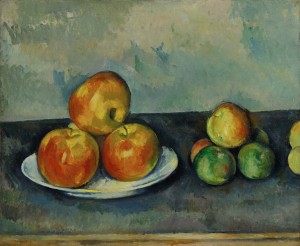I did something a couple of weeks ago that I have not done in four years—present a paper at an academic conference. Conference papers are the bread-and-butter of the academic life when climbing the tenure and promotion ladder, but I’ve never been a fan. A lot of posturing, name-dropping, networking and having papers read at you. I do not learn much just by listening to someone—I’m more a visual and tactile learner—but traditionally that’s been the way things go at conferences. Of course I usually forget that when I present a paper, I’m expecting my audience to appreciate mine far more than I enjoy theirs.
and promotion ladder, but I’ve never been a fan. A lot of posturing, name-dropping, networking and having papers read at you. I do not learn much just by listening to someone—I’m more a visual and tactile learner—but traditionally that’s been the way things go at conferences. Of course I usually forget that when I present a paper, I’m expecting my audience to appreciate mine far more than I enjoy theirs.
I have many colleagues and friends who like nothing better than giving papers at conferences. More power to them—I don’t. I have many conference pet peeves. The person who starts out her paper with  This is a work in progress. Really? How about finishing the work in progress, then presenting it at next year’s conference. Or the guy who says I’m going to just talk instead of reading a paper. Great—such people always ramble on past the allotted time, have no text to ground their blabbing, and generally sound like a Facebook post in person. Or the person who brought a thirty-page paper to be read in thirty minutes (humanly impossible), then with five minutes left summarizes the last seventeen pages with a brief paragraph then says that we can all talk about the full version of her argument over lunch. Fat chance.
This is a work in progress. Really? How about finishing the work in progress, then presenting it at next year’s conference. Or the guy who says I’m going to just talk instead of reading a paper. Great—such people always ramble on past the allotted time, have no text to ground their blabbing, and generally sound like a Facebook post in person. Or the person who brought a thirty-page paper to be read in thirty minutes (humanly impossible), then with five minutes left summarizes the last seventeen pages with a brief paragraph then says that we can all talk about the full version of her argument over lunch. Fat chance.
A “truism” in the humanities end of academia is that when weighing the importance of various professional activities toward tenure and promotion, the following equation is a good rule of thumb: A published book is worth five blind refereed articles, and a blind refereed article is worth five conference papers.  I like this equation, because it favors those who prefer the introverted activity of writing over the extroverted activity of conference-hopping. When applying for promotion to full professor a number of years ago, I presumed I was in good shape in the research portion of the teaching/research/service trinity because with two books and a dozen or so articles in print, I was well over the standard publication bar for full professors at my college. After I recovered from the shock of a negative promotion decision, I got a member of the super-secret committee who makes such judgments to tell me (someone always will) what the fuck the problem was. My colleague revealed that questions were raised when discussing my promotion case about a surprising paucity of conference presentations. “Really?” I thought. “Don’t these people know how to do the research math?”
I like this equation, because it favors those who prefer the introverted activity of writing over the extroverted activity of conference-hopping. When applying for promotion to full professor a number of years ago, I presumed I was in good shape in the research portion of the teaching/research/service trinity because with two books and a dozen or so articles in print, I was well over the standard publication bar for full professors at my college. After I recovered from the shock of a negative promotion decision, I got a member of the super-secret committee who makes such judgments to tell me (someone always will) what the fuck the problem was. My colleague revealed that questions were raised when discussing my promotion case about a surprising paucity of conference presentations. “Really?” I thought. “Don’t these people know how to do the research math?”
 I decided that the next year I would overwhelm the committee with conference presentation splendor by participating in as many conferences as my available faculty travel funds would allow. Ranging from Santa Barbara (beautiful) to Rochester (not so beautiful), I gave papers at five conferences during the next academic year, including a paper on a Saturday morning attended by four people—my wife, my father, and two guys who had agreed the night before to come to my paper if I would come to theirs on late Saturday afternoon when half of the conference attendees would be headed for the airport to fly home. But a vita does not specify how many people came to each paper on the presentation list, so how is the promotion committee going to know?
I decided that the next year I would overwhelm the committee with conference presentation splendor by participating in as many conferences as my available faculty travel funds would allow. Ranging from Santa Barbara (beautiful) to Rochester (not so beautiful), I gave papers at five conferences during the next academic year, including a paper on a Saturday morning attended by four people—my wife, my father, and two guys who had agreed the night before to come to my paper if I would come to theirs on late Saturday afternoon when half of the conference attendees would be headed for the airport to fly home. But a vita does not specify how many people came to each paper on the presentation list, so how is the promotion committee going to know?  One year after rejection, I received a unanimous vote for promotion. And I still remember that year with less fondness than most.
One year after rejection, I received a unanimous vote for promotion. And I still remember that year with less fondness than most.
My most memorable academic conference was in the fall of 2008 when I was invited to give one of the keynote papers at a conference in Paris. This was my first ever trip to Europe, let alone Paris, so I took full advantage of the experience.  The conference was held at a hostel sort of establishment in southeastern Paris, only a couple of blocks from a major Metro station. Big Bird was with me, as my paper was scheduled first on the first morning of the three day affair. Starting with lunch that first day, I tirelessly walked or
The conference was held at a hostel sort of establishment in southeastern Paris, only a couple of blocks from a major Metro station. Big Bird was with me, as my paper was scheduled first on the first morning of the three day affair. Starting with lunch that first day, I tirelessly walked or  rode the Metro for 48 hours straight, stuffing in as many sights, sounds and tastes of the City of Lights as I could. Notre Dame, Sainte Chapelle, the Louvre, the Eiffel Tower, the Arc de Triomphe, the left bank (and the right), the little street where my favorite Zola novel is set, the Pantheon, Montmartre, Sacre Coeur—I saw them all and more. I don’t remember much about the conference, which is no surprise since I did not attend a single paper other than my own.
rode the Metro for 48 hours straight, stuffing in as many sights, sounds and tastes of the City of Lights as I could. Notre Dame, Sainte Chapelle, the Louvre, the Eiffel Tower, the Arc de Triomphe, the left bank (and the right), the little street where my favorite Zola novel is set, the Pantheon, Montmartre, Sacre Coeur—I saw them all and more. I don’t remember much about the conference, which is no surprise since I did not attend a single paper other than my own.  But I saw Paris—at least some of it. Beats the hell out of Rochester.
But I saw Paris—at least some of it. Beats the hell out of Rochester.
“So,” you ask, “what was the topic of the conference paper you just presented?” Well, maybe you didn’t ask, but I’ll tell you anyways. The conference was the annual colloquy of the American Weil Society, the one group of academics I enjoy hanging out with (although I have missed the colloquy two of the last three years). My paper was entitled “‘To Look until One Exists No More’: Iris Murdoch and Simone Weil on the Metaphysic and Ethic of Attention.” The title will undoubtedly have to be shortened when they make the movie version. The paper is a rather detailed look at the influence of Simone Weil on Iris Murdoch’s philosophy and fiction—it’s fine if you wait for the book and the movie. I wrote a good deal of this paper during my last sabbatical six years ago as part of early work on a book that never got written. But as I read the paper to an audience of twenty-five or so the other day, I took note of a vignette from Murdoch that summarizes a shift in perspective that has become central in my life— one that I barely took note of when I put it in the paper six years ago. Murdoch writes:
one that I barely took note of when I put it in the paper six years ago. Murdoch writes:
Rilke said of Cezanne that he did not paint “I like it,” he painted “There it is.” One might say here that art is an excellent analogy of morals, or indeed that it is in this respect a case of morals. We cease to be in order to attend to the existence of something else, a natural object, a person in need.
How to engage things as they are rather than as I wish them to be. Remembering that I am not, after all, the center of the universe. Not to stifle the beauty and promise of a day by wrapping it in what Murdoch calls “the avaricious tentacles of the self.” These are newly learned lessons that I need to practice as I move into sabbatical in six weeks. I am glad for the reminder—even if it came at an academic conference.
















